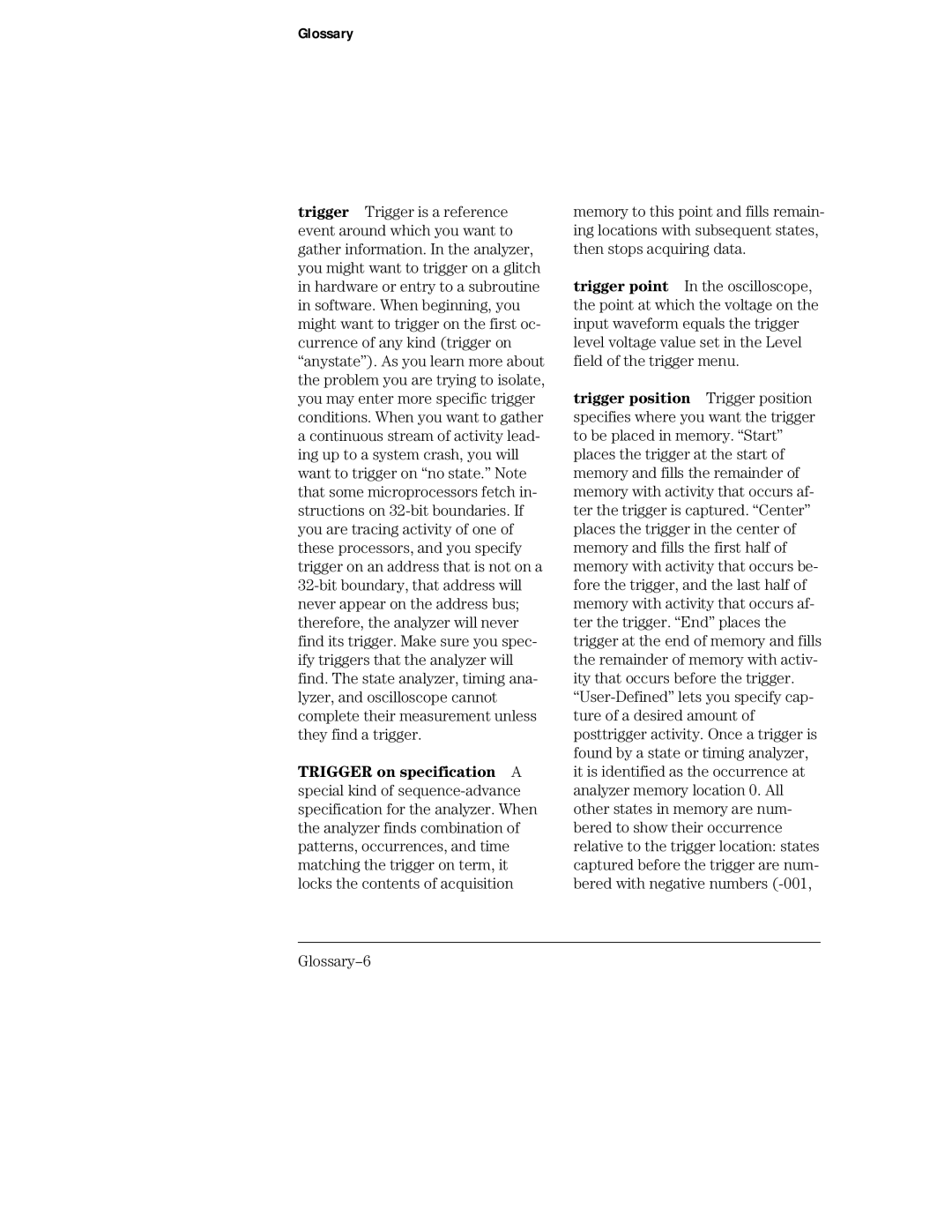Glossary
trigger Trigger is a reference event around which you want to gather information. In the analyzer, you might want to trigger on a glitch in hardware or entry to a subroutine in software. When beginning, you might want to trigger on the first oc- currence of any kind (trigger on “anystate”). As you learn more about the problem you are trying to isolate, you may enter more specific trigger conditions. When you want to gather a continuous stream of activity lead- ing up to a system crash, you will want to trigger on “no state.” Note that some microprocessors fetch in- structions on
TRIGGER on specification A special kind of
memory to this point and fills remain- ing locations with subsequent states, then stops acquiring data.
trigger point In the oscilloscope, the point at which the voltage on the input waveform equals the trigger level voltage value set in the Level field of the trigger menu.
trigger position Trigger position specifies where you want the trigger to be placed in memory. “Start” places the trigger at the start of memory and fills the remainder of memory with activity that occurs af- ter the trigger is captured. “Center” places the trigger in the center of memory and fills the first half of memory with activity that occurs be- fore the trigger, and the last half of memory with activity that occurs af- ter the trigger. “End” places the trigger at the end of memory and fills the remainder of memory with activ- ity that occurs before the trigger.
